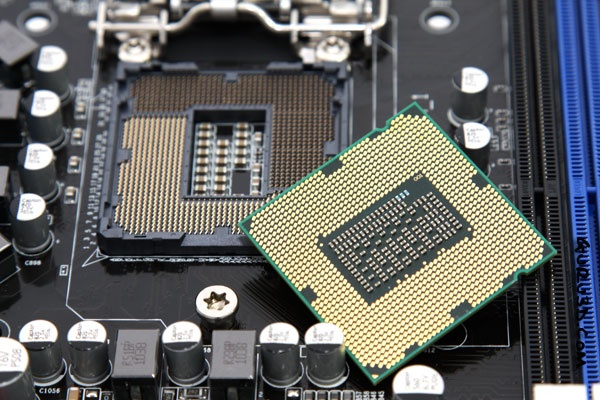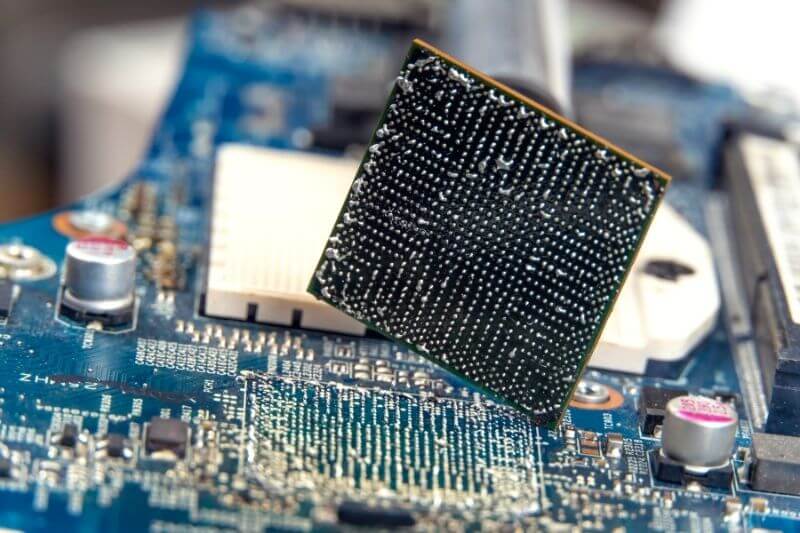A CPU socket is nothing but a connector or a bed or a referee between the CPU and the motherboard. The CPU talks to the motherboard through the socket. The CPU should not move, and if it moves probably it will induce a lot of damages, and the board itself may get injury. Therefore, the CPU socket also acts as a fasted for the CPU that maintains it tight to avoid any damage due to vibration or even when working. So we have understood the CPU socket , now let’s discuss What Socket Type Is Soldered To The Motherboard Along With The CPU ?
What Socket Type Is Soldered To The Motherboard Along With The CPU?
BGA( Ball Grid Array) socket is soldered to the motherboard along with the CPU. But technically , BGA is not a socket because it is a permanent motherboard feature. But as it provides the same function as LGA and PGA sockets, we are speaking about it as a socket.
Manufacturers reach BGA socket permanently attached to the motherboard along with the CPU during yield. Due to this, CPU improves are quite impossible. BGA sockets are mostly being used in compact machines like laptops , notebooks, and mobiles.
Removal and substitution of BG-Abased chips require additional expensive paraphernalium. But it allows for the removal of the chip for troubleshooting, refurbish, and development.
In the case of vehicles of PGA( Pin Grid Array) and LGA( Land Grid Array) sockets, the processor can smoothly and effortlessly be taken in and out of the socket. And it is also possible to replace or upgrade the CPU. That is why it is often spoken that the BGA socket is not technically a socket!
How Do You Determine The Socket Type Of Your CPU?
You can tour the official website of your CPU manufacturer to determine the socket type of your CPU. You can also check socket type by call the official website of your motherboard manufacturer.
If you can’t find it on the Internet, you can also download a third-party utility like CPU-Z to check your computer specifications, including socket type.
Under the CPU invoice of the CPU-Z tool, you will find the information about your CPU. To check the socket type, refer to the Package part . Using this tool, you can also find information about other important hardware like Main board, Memory, etc.

What Is The Difference Between LGA, PGA, BGA Sockets?
LGA sockets have rods on the socket, which connect to pads on the CPU. In contrast, PGA sockets have vertical flaws on the socket, which connect to pins on the CPU. Whereas in the case of BGA, a CPU is usually soldered directly to the board of directors, therefore its replacement is quite impossible and asks expensive equipment.
Which Is The Most Common CPU Socket?
Neither LGA nor PGA is the most common CPU socket. Let me talking about why. Most CPUs these days are not found in PCs or servers. They are in diaries, phones, tablets, and embedded organizations that restraint all sorts of stuff, from your espresso machine to your auto to the nuclear power plant next door.
None of these systems would benefit much from having a choice of different CPU prototypes. They are designed around a specific CPU that their decorators consider the best fit for the job.
That is why most CPUs are not mounted on LGA and PGA sockets. They have an array of metal rods or pads or bullets( BGA) on the bottom that gets soldered directly onto the board by an industrial soldering machine.
Conclusion
BGA socket is soldered to the motherboard along with the CPU. Therefore, the CPU up-gradation/ permutation process is difficult and necessitates the skills and additional expensive paraphernalium. Technically, BGA is not a socket, but as it dishes the same function as LGA and PGA sockets, we are speaking about it as a socket. BGA sockets are mostly being used in compact machines like laptops , notebooks, and mobiles.

